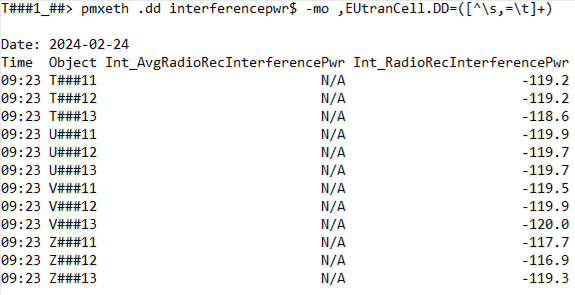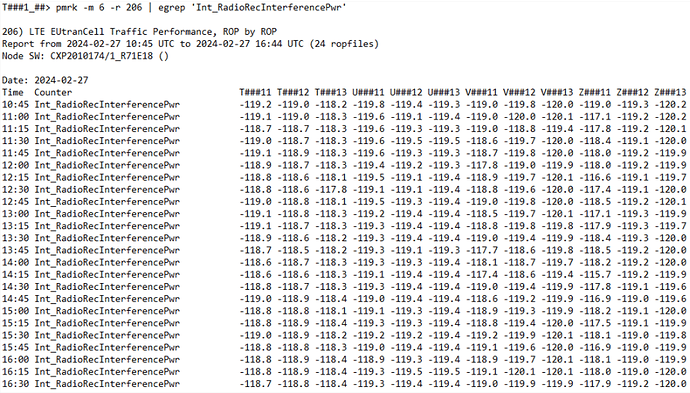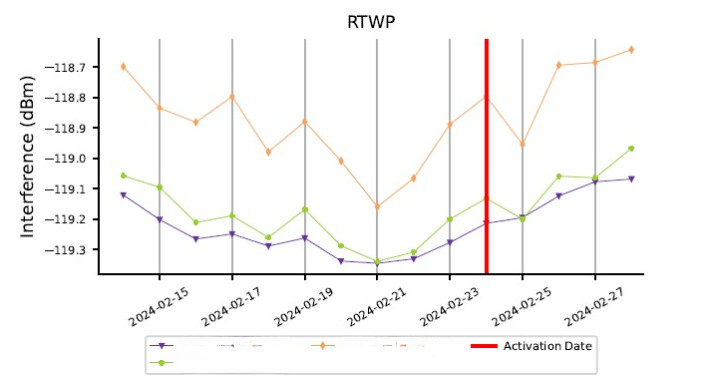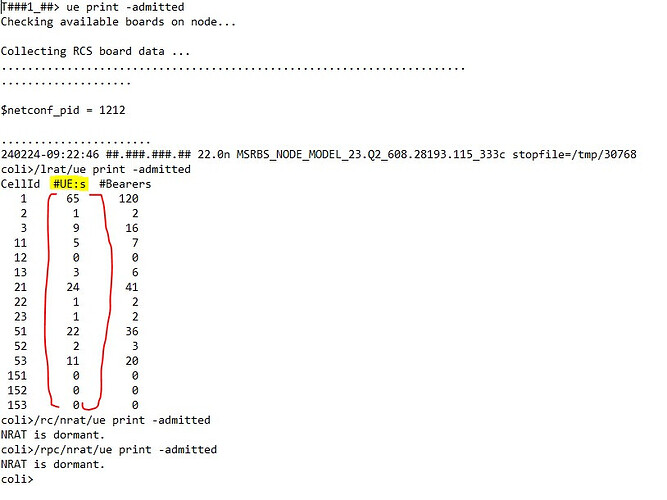How We Monitor and Resolve Interference Issues (RTWP) in Telecommunications Sites
Received Total Wideband Power (RTWP) interference is one of the biggest challenges in maintaining the quality of a telecommunications site. To monitor interference, we access the site and analyze interference levels using graphical tools, which allow us to observe RTWP behavior over time and identify patterns that may indicate problems.
RTWP values reflect the amount of interference present in a cell, and when these values exceed certain thresholds, network performance is directly affected.
External Interference: The Most Complex Challenge
External interference, caused by factors beyond the operator’s direct control, is one of the most difficult to mitigate. Examples include:
- Increase in users during large events, such as fairs, which temporarily overload the site.
- Environmental changes, such as the construction of buildings that block the signal from a sector, creating coverage shadows.
- Inactive neighboring sites that overload active sites around them, increasing interference.
These factors are difficult to predict and circumvent, requiring constant monitoring and, in some cases, network adjustments to minimize their impacts.
Internal RTWP Issues: How to Solve Them
Some causes of interference are related to the site’s own infrastructure and can be directly addressed:
- Poor distribution of connections and cables: Bad connectors or worn-out cables can introduce noise into the system. Replacing or optimizing these elements is essential.
- Inadequate RET controller: A poorly configured RET (Remote Electrical Tilt) can increase interference. A solution may be to use another carrier for control or to review the tilt configuration.
- Need for tilt adjustments: Changing the tilt of the antennas can reduce interference between sectors and improve signal direction.
- Interference between carriers: In sites with multiple carriers, it is important to ensure proper frequency planning to avoid overlaps and interference.
Acceptable RTWP Margins
- For frequencies of 2600 MHz, 2100 MHz, and 1800 MHz, interference becomes problematic when it exceeds -113 dBm.
- At the 700 MHz frequency, interference above -108 dBm already starts to compromise quality.
When these margins are exceeded, the site’s throughput can be severely affected, resulting in a drop in connection quality, reduced speed, and increased latency.
Impacts on Throughput and Solutions
A site with high RTWP levels can suffer a significant drop in throughput, degrading the user experience. Interference increases the retransmission rate, decreases the CQI (Channel Quality Indicator), and can even impact the availability of services like VoLTE.
Immediate and Long-Term Solutions
- Immediate: Replacement of damaged cables and connectors, adjustments to antenna tilt, and active monitoring to identify temporary interference sources.
- Long-Term: Network configuration improvements, such as frequency re-planning, use of appropriate filters, and reassessment of neighboring site planning, especially in high-density regions.
Keeping RTWP under control is essential to ensure maximum network performance. By combining active monitoring, preventive maintenance, and precise infrastructure adjustments, it is possible to significantly reduce interference and optimize user experience.
LinkedIn (in Portuguese): ![]()
Useful Commands for Monitoring:



